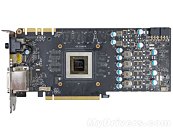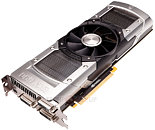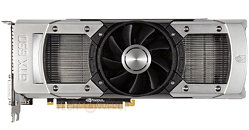3D Nanoscale Petabit Capacity Optical Disk Format Proposed by Chinese R&D Teams
The University of Shanghai for Science and Technology (USST), Peking University and the Shanghai Institute of Optics and Fine Mechanics (SIOM) are collaborating on new Optical Data Storage (ODS) technologies—a recently published paper reveals that scientists are attempting to create 3D nanoscale optical disk memory that breaks into petabit capacities. Society (as a whole) has an ever-growing data demand—this requires the development of improved high-capacity storage technologies—the R&D teams believe that ODS presents a viable alternative route to traditional present day solutions: "data centers based on major storage technologies such as semiconductor flash devices and hard disk drives have high energy burdens, high operation costs and short lifespans."
The proposed ODS format could be a "promising solution for cost-effective long-term archival data storage." The researchers note that current (e.g Blu-ray) and previous generation ODS technologies have been: "limited by low capacities and the challenge of increasing areal density." In order to get ODS up to petabit capacity levels, several innovations are required—the Nature.com abstract stated: "extending the planar recording architecture to three dimensions with hundreds of layers, meanwhile breaking the optical diffraction limit barrier of the recorded spots. We develop an optical recording medium based on a photoresist film doped with aggregation-induced emission dye, which can be optically stimulated by femtosecond laser beams. This film is highly transparent and uniform, and the aggregation-induced emission phenomenon provides the storage mechanism. It can also be inhibited by another deactivating beam, resulting in a recording spot with a super-resolution scale." The novel optical storage medium relies on dye-doped photoresist (DDPR) with aggregation-induced emission luminogens (AIE-DDPR)—a 515 nm femtosecond Gaussian laser beam takes care of optical writing tasks, while a doughnut-shaped 639 nm continuous wave laser beam is tasked with retrieval. A 480 nm pulsed laser and a 592 nm continuous wave laser work in tandem to read data.
The proposed ODS format could be a "promising solution for cost-effective long-term archival data storage." The researchers note that current (e.g Blu-ray) and previous generation ODS technologies have been: "limited by low capacities and the challenge of increasing areal density." In order to get ODS up to petabit capacity levels, several innovations are required—the Nature.com abstract stated: "extending the planar recording architecture to three dimensions with hundreds of layers, meanwhile breaking the optical diffraction limit barrier of the recorded spots. We develop an optical recording medium based on a photoresist film doped with aggregation-induced emission dye, which can be optically stimulated by femtosecond laser beams. This film is highly transparent and uniform, and the aggregation-induced emission phenomenon provides the storage mechanism. It can also be inhibited by another deactivating beam, resulting in a recording spot with a super-resolution scale." The novel optical storage medium relies on dye-doped photoresist (DDPR) with aggregation-induced emission luminogens (AIE-DDPR)—a 515 nm femtosecond Gaussian laser beam takes care of optical writing tasks, while a doughnut-shaped 639 nm continuous wave laser beam is tasked with retrieval. A 480 nm pulsed laser and a 592 nm continuous wave laser work in tandem to read data.





























































